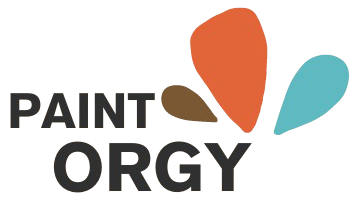Paint, in its myriad forms and applications, has long been a cornerstone of artistic expression across cultures and epochs. From the vibrant canvases of Renaissance masters to the avant-garde installations of contemporary artists, paint serves as a versatile medium through which creativity, emotion, and narrative converge. This article delves into the rich history, diverse techniques, and profound impact of paint in the world of art.
A Historical Tapestry of Paint
Painting, as an art form, dates back thousands of years, with early civilizations using natural pigments derived from minerals, plants, and animal sources to adorn cave walls and ceremonial objects. The evolution of paint—from ancient frescoes and illuminated manuscripts to the oil paintings of the Renaissance—mirrors humanity’s journey through cultural, political, and technological upheavals.
Techniques and Mediums
1. Oil Painting: The advent of oil painting in the 15th century revolutionized artistic expression, allowing for intricate details, luminous colors, and subtle gradations of light and shadow. Artists like Leonardo da Vinci and Rembrandt mastered the technique, creating timeless masterpieces that continue to captivate audiences today.
2. Watercolor: Known for its transparent and ethereal qualities, watercolor paint is beloved for its spontaneity and luminosity. Artists such as J.M.W. Turner and Winslow Homer embraced watercolor to capture landscapes, emotions, and fleeting moments with delicate precision.
3. Acrylics: Developed in the mid-20th century, acrylic paint offers versatility, fast drying times, and a range of textures. Artists like David Hockney and Frida Kahlo embraced acrylics for their bold colors and ability to create both subtle gradients and striking contrasts.
4. Mixed Media: Contemporary artists often combine traditional paint mediums with unconventional materials, such as found objects, textiles, and digital elements. This approach expands artistic possibilities, blurring the boundaries between painting, sculpture, and installation art.
The Language of Color and Composition
Color theory and composition play pivotal roles in painting, influencing mood, symbolism, and visual impact. Artists strategically select hues, tones, and contrasts to evoke emotions, convey narratives, or challenge perceptions. From the serene blues of Monet’s water lilies to the vibrant geometries of Mondrian’s compositions, color serves as a universal language that transcends cultural and linguistic barriers.
Contemporary Trends and Innovations
In the digital age, painting continues to evolve with advancements in technology and interdisciplinary collaborations. Digital painting software, virtual reality tools, and interactive installations enable artists to push the boundaries of traditional mediums, fostering immersive and interactive art experiences.
Beyond Aesthetics: Art as Reflection and Provocation
Painting serves as a mirror of society, reflecting social, political, and cultural narratives. Artists confront issues of identity, environmentalism, and globalization through their work, prompting viewers to engage critically with pressing contemporary issues. Paintings can provoke dialogue, challenge assumptions, and inspire action, making art a catalyst for social change and collective introspection.
Paint, in all its forms and applications, continues to inspire, provoke, and captivate audiences worldwide. Whether exploring the timeless techniques of the Old Masters or embracing innovative digital mediums, artists harness the transformative power of paint to communicate, commemorate, and contemplate the human experience. As we navigate an ever-changing world, painting remains a testament to creativity’s enduring ability to illuminate, challenge, and enrich our lives.

s5lcfj